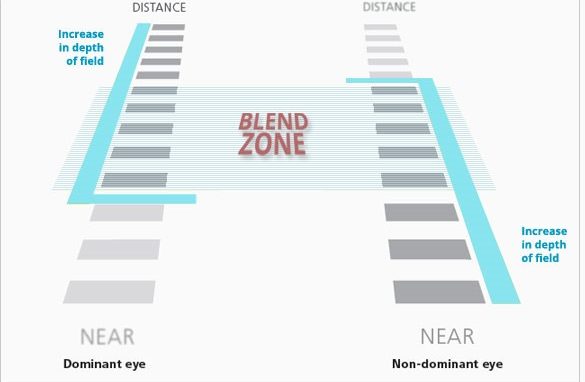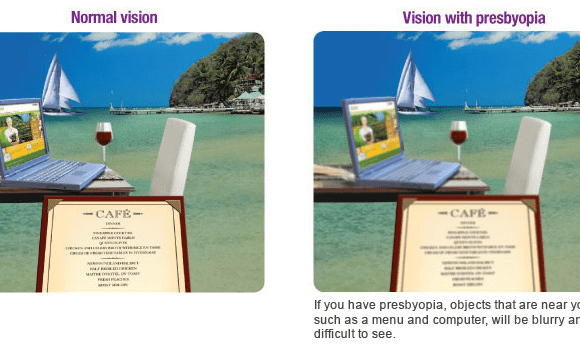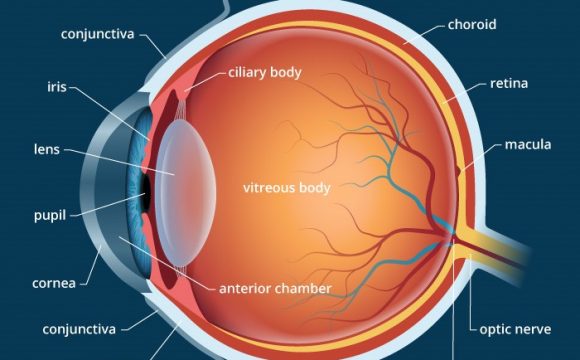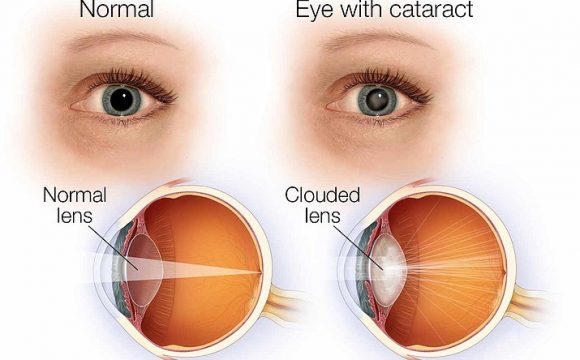You can’t escape presbyopia, even if you’ve never had a vision problem before. Even people who are nearsighted will notice that their near vision blurs when they wear their usual eyeglasses or contact lenses to correct distance vision. It’s often a significant and emotional event because it’s a sign of aging that’s impossible to ignore and difficult to hide.
When you become presbyopic, you either have to hold your smartphone and other objects and reading material (books, magazines, menus, labels, etc.) farther from your eyes to see them more clearly. Unfortunately, when you move things farther from your eyes they get smaller in size, so this is only a temporary and partially successful solution to presbyopia
What Causes Presbyopia?
Presbyopia is caused by age-related processes:
- changes occur within the proteins in the natural lens, making the lens harder and less elastic over time and with less elasticity, the eye has a harder time focusing up close.
- An age-related weakening of the muscle fibers surrounding the lens. Other, less popular theories exist as well.
Presbyopia Treatment:
Eyeglasses with progressive lenses are the most popular solution for presbyopia for most people over age 40. These line-free multifocal lenses restore clear near vision and provide excellent vision at all distances, regardless of what refractive errors you may have in addition to presbyopia.
Another option is eyeglasses with bifocal lenses. But bifocals are much less popular these days because they provide a more limited range of vision for many presbyopes. Also, most people don’t want to show their age by wearing eyeglasses that have a visible bifocal line.
Also, it’s common for people with presbyopia to notice they are becoming more sensitive to light and glare due to aging changes in their eyes. Photochromic lenses, which darken automatically in sunlight, are a good choice for this reason. They are available in all lens designs, including progressive lenses and bifocals.
Reading glasses are another choice. Unlike bifocals and progressive lenses, which most people wear all day, reading glasses are worn only when needed to see close objects and small print more clearly.
Regardless which type of eyeglasses you choose to correct presbyopia, definitely consider lenses that include anti-reflective coating. This layer eliminates reflections that can be distracting and cause eye strain. It also helps reduce glare and increase visual clarity for night driving.
Because the human lens continues to change as you grow older, your presbyopic prescription will need to be increased over time as well. You can expect your eye care practitioner to prescribe a stronger correction for near work as you need it.
Another type of contact lens correction for presbyopia is monovision, in which one eye wears a distance prescription, and the other wears a prescription for near vision. The brain learns to favor one eye or the other for different tasks. But while some people are delighted with this solution, others complain of reduced visual acuity and some loss of depth perception with monovision.
Presbyopia Treatment: Surgery
Don’t want to wear eyeglasses or contact lenses for presbyopia? A number of surgical options to treat presbyopia are available as well.
One presbyopia correction procedure that’s gaining popularity is implantation of a corneal inlay. Typically implanted in the cornea of the eye that’s not your dominant eye, a corneal inlay increases depth of focus of the treated eye and reduces the need for reading glasses without significantly affecting the quality of your distance vision.
The first step to see if you are a good candidate for presbyopia surgery is to have a comprehensive eye exam and a consultation with a refractive surgeon who specializes in the surgical correction of presbyopia, and in Eye Care center you will find the best care and best consultants specialized in this ophthalmic subspecialty.























